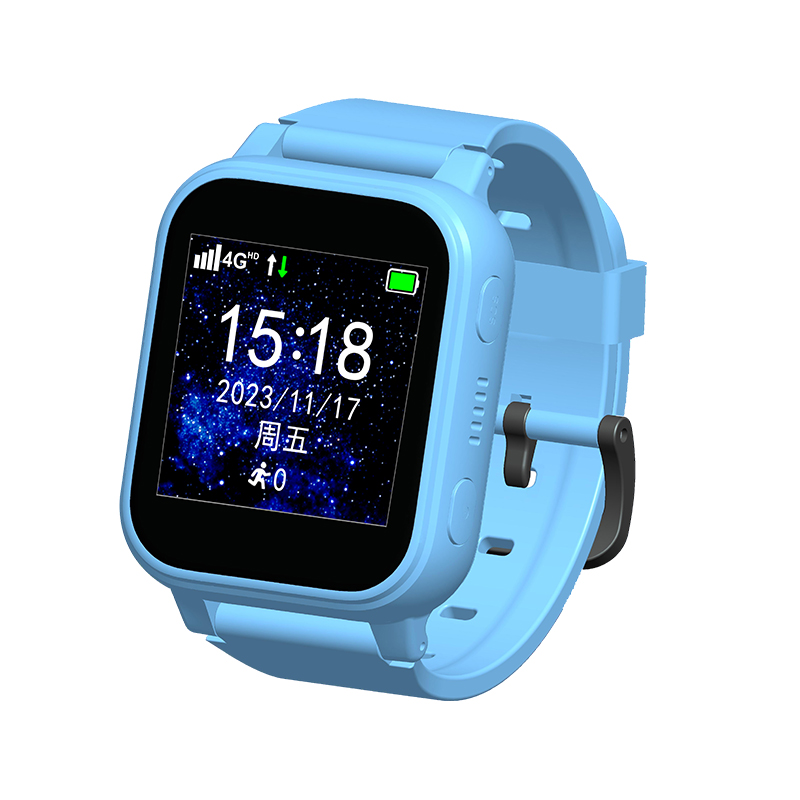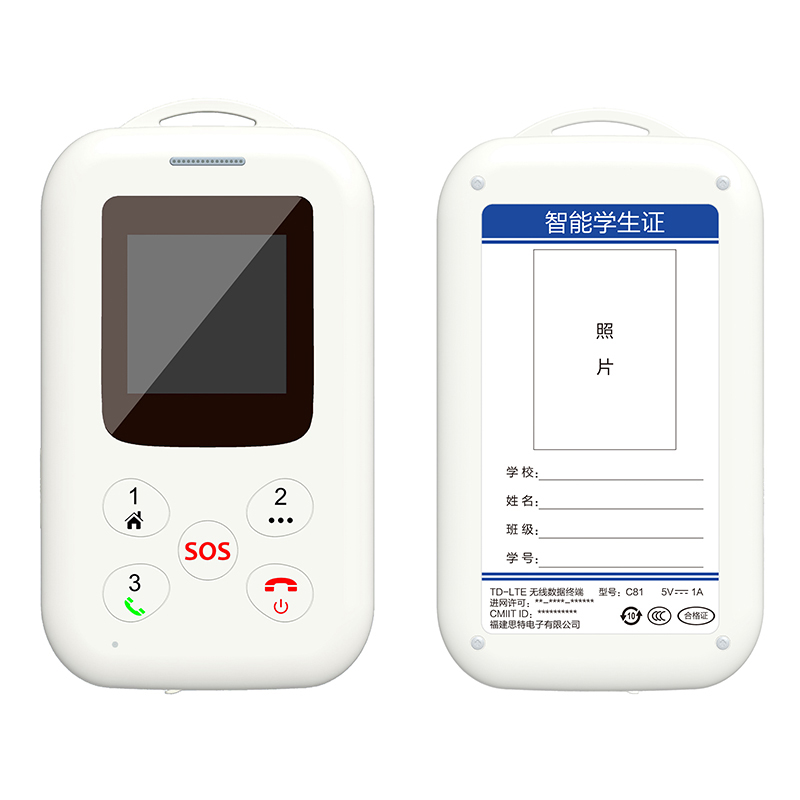Kid Smart Watch is the best tool to cultivate children's time awareness
Release Time : 2025-04-05
In the digital age, Kid Smart Watch has long surpassed the basic function of "seeing time" and has become a powerful assistant for parents to manage their children's lives and cultivate time awareness. From "getting up on time" to "rationally planning homework time", Kid Smart Watch uses technology to empower and transform the abstract concept of time into perceptible and operational life practices, becoming a "time mentor" on the road of children's growth.
1. Accurate time perception: from "fuzzy concept" to "concrete control"
Kid Smart Watch visualizes time through clear digital display and voice time reporting functions. For example, children can set "wake-up alarm" and "lunch break reminder" through the watch, and intuitively feel the passage of time in vibration or ringtones. This "visualization" design associates abstract time units (such as minutes and hours) with specific events (such as eating and going to school), helping children establish a "time-behavior" mapping relationship. Studies have shown that children who use Kid Smart Watch for a long time are 30% more sensitive to the passage of time than their peers, which lays the foundation for subsequent time management capabilities.
2. Task planning and execution: from "passive urging" to "active arrangement"
The "to-do list" function of kid smart watch is the core of cultivating time management ability. Parents can make daily plans with their children, such as "complete math homework at 16:00" and "read for 30 minutes at 18:30", and enter them into the watch. Children get instant feedback (such as virtual medals and points rewards) by checking the completed items. This gamification mechanism stimulates initiative. For example, a parent shared: "In order to collect the "Time Guardian" medal, the child took the initiative to adjust the order of homework, and the efficiency increased by one time." The "task countdown" function of the watch allows children to intuitively see the remaining time and reduce procrastination.
3. Time allocation balance: from "indulging in entertainment" to "combining work and rest"
In response to the problem that children are easily addicted to electronic devices, kid smart watch helps parents set the daily usage time through the "screen time management" function. For example, limit the game time to 30 minutes, and automatically lock the screen after exceeding it. Smarter watches can also analyze usage habits and generate a "time allocation report" to indicate the time periods when children are overly dependent on certain types of applications. This "gentle constraint" allows children to learn to self-regulate. One user reported: "I used to be unable to stop playing with the tablet, but now after the watch reminds me, I will take the initiative to stop and jump rope."
4. Social and time management: from "disordered communication" to "efficient interaction"
The social functions of kid smart watch (such as voice calls and family group chats) also incorporate the concept of time management. Parents can set "call time periods" to prevent children from chatting late at night; the watch's built-in "friend interaction rules", such as "send a maximum of 5 voice messages per day", allow children to learn to express key points within a limited time. This "limited freedom" actually promotes communication efficiency. A teacher observed: "Children wearing watches are more focused in class because they know that they can only communicate with friends during breaks."
5. Long-term habit formation: from "short-term goals" to "lifelong abilities"
The value of kid smart watch lies not only in short-term behavior correction, but also in long-term habit formation. Through continuous use, children gradually form a "time budget" mindset: plan daily tasks in advance and reserve flexible time to deal with emergencies. This ability will accompany children into middle school, college and even the workplace. For example, a college student shared: "The task list habit I developed with Kid Smart Watch in high school helped me cope with clubs, internships and studies at the same time in college."
Kid Smart Watch is not a simple electronic product, but an enlightenment teacher for children's time management. It uses technology as a bridge to transform the abstract concept of time into an operational daily practice, allowing children to establish a sense of time in "learning while playing and playing while learning". Of course, tools are only auxiliary, and the guidance and role model of parents are equally important.
1. Accurate time perception: from "fuzzy concept" to "concrete control"
Kid Smart Watch visualizes time through clear digital display and voice time reporting functions. For example, children can set "wake-up alarm" and "lunch break reminder" through the watch, and intuitively feel the passage of time in vibration or ringtones. This "visualization" design associates abstract time units (such as minutes and hours) with specific events (such as eating and going to school), helping children establish a "time-behavior" mapping relationship. Studies have shown that children who use Kid Smart Watch for a long time are 30% more sensitive to the passage of time than their peers, which lays the foundation for subsequent time management capabilities.
2. Task planning and execution: from "passive urging" to "active arrangement"
The "to-do list" function of kid smart watch is the core of cultivating time management ability. Parents can make daily plans with their children, such as "complete math homework at 16:00" and "read for 30 minutes at 18:30", and enter them into the watch. Children get instant feedback (such as virtual medals and points rewards) by checking the completed items. This gamification mechanism stimulates initiative. For example, a parent shared: "In order to collect the "Time Guardian" medal, the child took the initiative to adjust the order of homework, and the efficiency increased by one time." The "task countdown" function of the watch allows children to intuitively see the remaining time and reduce procrastination.
3. Time allocation balance: from "indulging in entertainment" to "combining work and rest"
In response to the problem that children are easily addicted to electronic devices, kid smart watch helps parents set the daily usage time through the "screen time management" function. For example, limit the game time to 30 minutes, and automatically lock the screen after exceeding it. Smarter watches can also analyze usage habits and generate a "time allocation report" to indicate the time periods when children are overly dependent on certain types of applications. This "gentle constraint" allows children to learn to self-regulate. One user reported: "I used to be unable to stop playing with the tablet, but now after the watch reminds me, I will take the initiative to stop and jump rope."
4. Social and time management: from "disordered communication" to "efficient interaction"
The social functions of kid smart watch (such as voice calls and family group chats) also incorporate the concept of time management. Parents can set "call time periods" to prevent children from chatting late at night; the watch's built-in "friend interaction rules", such as "send a maximum of 5 voice messages per day", allow children to learn to express key points within a limited time. This "limited freedom" actually promotes communication efficiency. A teacher observed: "Children wearing watches are more focused in class because they know that they can only communicate with friends during breaks."
5. Long-term habit formation: from "short-term goals" to "lifelong abilities"
The value of kid smart watch lies not only in short-term behavior correction, but also in long-term habit formation. Through continuous use, children gradually form a "time budget" mindset: plan daily tasks in advance and reserve flexible time to deal with emergencies. This ability will accompany children into middle school, college and even the workplace. For example, a college student shared: "The task list habit I developed with Kid Smart Watch in high school helped me cope with clubs, internships and studies at the same time in college."
Kid Smart Watch is not a simple electronic product, but an enlightenment teacher for children's time management. It uses technology as a bridge to transform the abstract concept of time into an operational daily practice, allowing children to establish a sense of time in "learning while playing and playing while learning". Of course, tools are only auxiliary, and the guidance and role model of parents are equally important.







